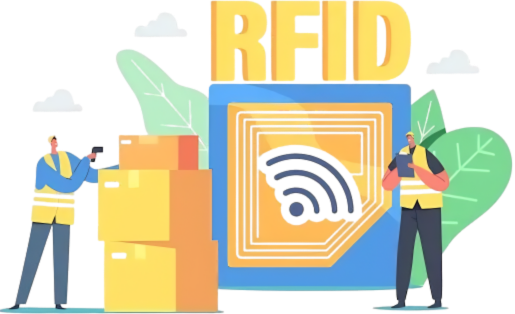Auditing Property, Plant, and Equipment (PP&E) is integral to ensuring financial accuracy, regulatory compliance, and governance. PP&E represents a substantial portion of an entity’s balance sheet, making their proper accounting and audit critical for stakeholders, including investors, regulators, and management.
The ICAI Guidance Note on Audit of PP&E serves as a vital resource for auditors and companies, offering detailed instructions for addressing recognition, valuation, depreciation, and compliance challenges. For companies especially, it can help them prepare for timely audits.
By breaking down its core clauses, this guide empowers auditors and accounting professionals to deliver high-quality results while adhering to professional standards.
Definition of Property, Plant, and Equipment (PP&E) as per Guidance Notes
- Definition and Scope:
- For entities complying with Revised Accounting Standards (AS), PP&E refers to tangible items:
- Held for production, supply, rental, or administrative purposes.
- Expected to be used over multiple periods.
- For entities applying AS 10 and AS 6, PP&E includes assets used for producing goods or services, not intended for sale in the ordinary course of business.
- Judgement is essential to determine what qualifies as PP&E, considering specific circumstances. For instance, major spare parts, servicing, and stand-by equipment expected to be used for more than one period can qualify as PP&E.
- For entities complying with Revised Accounting Standards (AS), PP&E refers to tangible items:
- Classification Considerations:
- Classification as PP&E depends on the asset’s purpose or intended use, which may vary across businesses or change over time.
- Recognition must align with the principles of applicable accounting standards.
- Significance of PP&E in Financial Reporting:
- PP&E often represents a significant portion of total assets, especially in manufacturing entities, highlighting the importance of its audit.
- Key Features of PP&E Impacting Audit:
- Slow Turnover: PP&E, unlike current assets, is not frequently replaced and is carried forward across years.
- High Value: Individual PP&E items typically have a high monetary value.
- Close Acquisition Control: High-value assets, especially self-constructed ones, are usually acquired under stringent control.
- Accounting Impact: Errors in PP&E accounting can have long-term or significant effects on financial statements.
- Inflationary Effects: Under cost models, PP&E book values are often lower than their replacement values in inflationary conditions.
Risks and Errors in Property, Plant, and Equipment (PP&E)
Inherent Risks
- Understanding the Entity and Internal Controls:
- Auditors must understand internal controls over PP&E, such as capital budgeting and review processes.
- This includes assessing risks of material misstatement and planning procedures accordingly.
- Audit Focus Areas:
- Existence: Verify that recorded assets physically exist and ensure de-recognition of assets sold, transferred, or abandoned.
- Completeness: Confirm all eligible expenditures, including capitalized finance costs and assets under finance leases, are recorded.
- Cutoff: Ensure proper timing of transaction recognition affecting PP&E.
- Rights and Ownership: Validate ownership through title deeds, agreements, or similar documents.
- Valuation: Assess the accuracy of asset valuation, including correct classification (e.g., land vs. buildings) and compliance with component-based approaches.
- Depreciation: Check depreciation calculations for errors in accounting policies, remaining useful life, residual value, or classification.
- Carrying Cost: Review fair value adherence under valuation models, including valid assumptions and competent valuations.
- Impairment: Ensure timely recognition or reversal of impairments.
- Presentation and Disclosure: Confirm appropriate PP&E disclosures in financial statements.
Fraud Risks and Errors
- Potential Misstatements:
- Inflated purchase prices, especially from related parties.
- Wrongful write-offs as scrap, obsolescence, or other mischaracterizations.
- Incorrect recording of repairs/maintenance as PP&E or vice versa.
- Capitalizing ineligible expenditures as PP&E.
- Recording assets that were not received.
- Misuse of PP&E for personal benefit, including unauthorized removal or collateral use.
- Contributing Factors:
- Weak internal controls, such as:
- Limited management oversight of employees handling sensitive assets.
- Poorly secured, small, or unmarked assets.
- Delayed or incomplete reconciliations and physical verifications.
- Lack of physical safeguards for PP&E.
- Employees using assets for personal benefits (e.g., collateral for loans).
- Weak internal controls, such as:
Auditor’s Role
- Risk Assessment Procedures:
- Inquiries: Discuss risks with management and key personnel, including controls, policies, and strategies.
- Analytical Procedures: Analyze financial data and ratios to detect anomalies.
- Observation and Inspection: Physically inspect premises and facilities to confirm PP&E conditions.
Internal Controls and Audit Procedures for PP&E
Internal Controls
- Expenditure Controls:
- Use of capital budgeting ensures authorization, monitoring, and classification of expenses (capital vs. revenue) for acquired or self-constructed assets.
- Accountability and Utilization:
- Maintain records for each asset or component to ensure custodianship, physical verification, and appropriate usage for organizational objectives.
- Information Controls:
- Reliable data for depreciation, disposals, tax filings, insurance claims, repairs, and assessment of useful life.
- Asset Safeguards:
- Protect assets against loss or damage via insurance, warranties, and personnel responsibility for safeguarding.
Substantive Procedures
- Verification of Records:
- Examine records and controls, ensuring management’s physical verification. Review accounting policies for capitalizing costs, depreciation, and valuation.
- Opening Balances:
- Verify opening balances against schedules, ledgers, and prior records. For initial audits, follow SA 510 (Revised).
- Capital Work in Progress (CWIP):
- Verify pending installations or assets under construction through contracts, budgets, and completion certifications. Reconcile movement in CWIP and review for capitalization readiness.
- Additions to PP&E:
- Examine documents for acquisitions, self-constructed assets, and leases. Validate dates for readiness to use, exchange transactions, and reclassifications. Review expense accounts to ensure no misclassification.
- Ownership of PP&E:
- Verify ownership through title deeds or confirmations from custodians like solicitors or banks. Ensure economic benefits accrue to the client.
- Impairment of PP&E:
- Identify indicators of impairment, such as market declines or operational damages, and assess management’s treatment.
- Deletions from PP&E:
- Review retirements (sale, destruction, etc.) for proper authorization, accounting adjustments, and disclosure of gains/losses. Ensure no omitted write-offs via cross-checking records, inquiries, and certificates.
- Changes in Use or Classification:
- Evaluate reclassifications (e.g., to inventory or assets held for sale) when usage changes significantly.
Physical Verification, Recognition, and Valuation of PP&E
Physical Verification of PP&E:
- Management’s Responsibility: It’s the management’s duty to periodically verify PP&E to ensure their existence. Auditors should observe this process, assess the instructions given to staff, and ensure competent personnel are conducting the verification.
- Reasonable Verification Methods: Direct checks might not always be feasible, especially in process industries or continuously used assets. In such cases, indirect evidence (e.g., operational efficiency of an oil refinery) may suffice. Periodic surveys are recommended for open land to prevent encroachment.
- Marking and Tracking: Movable assets should have unique identifiers for effective tracking if verification cannot be done simultaneously.
- Third-Party Assets: For assets outside the company premises, verification may include obtaining third-party confirmations or physical inspections based on risk assessments.
- Frequency and Discrepancies: Verification intervals should be appropriate to asset volume and complexity (e.g., annual checks for fewer assets, rotational checks over three years for numerous assets). Discrepancies found during verification should be evaluated for materiality and addressed in accounts or controls.
Recognition of PP&E:
- Criteria for Recognition: An item should only be recognized as an asset if its cost is measurable and future economic benefits are expected.
- Compliance with Standards: Assets must be accounted for in line with applicable accounting standards, including items under construction (capital work in progress).
- Component Approach: PP&E components with distinct useful lives (e.g., furnace linings, aircraft seats) should be separately capitalized and depreciated. Replacement components are capitalized if they enhance capacity, efficiency, or quality.
Valuation of PP&E:
- Initial and Subsequent Valuation: Assets should be valued per generally accepted accounting principles (GAAP). After recognition, they are measured using either the cost model or revaluation model, as chosen by the entity.
- Fair Value Assessment: Methods like market value, income approach, or depreciated cost should be used for fair value assessment, supported by competent experts.
- Carrying Amount Reviews: Entities must regularly review carrying values, considering recoverable amounts, dismantling/restoration obligations, and apportioned costs for combined purchases.
- Self-Constructed Assets: Costs for self-constructed assets must include direct expenses and borrowing costs but exclude abnormal wastage or costs beyond normal credit terms.
- Testing and Adequacy:
- Auditor verifies depreciation calculations, compares with prior years, and ensures adequacy based on accepted accounting practices.
- Component Depreciation:
- Significant components of an asset with different useful lives are depreciated separately (e.g., aircraft airframe vs. engines).
- Review and Adjustments:
- Depreciation methods should be reviewed annually, and changes treated as accounting estimate modifications.
- Construction in Progress:
- Assets under construction are not depreciated but are tested for impairment.
Useful Life and Impairment
- Review of Useful Life:
- Management must review the useful life and residual value of assets annually.
- Useful life is determined by expected economic benefits or policy standards.
- Impairment:
- Assets are impaired when their carrying amount exceeds their recoverable amount.
- Compensation for impaired or lost assets should be recognized when receivable.
- Impairment losses may be reversed if conditions improve, ensuring the revised carrying amount does not exceed the original pre-impairment value.
Revaluation of PP&E
- Appraisal and Expertise:
- Revaluation involves systematic appraisal by experts (e.g., engineers, architects) to determine fair value.
- The auditor reviews these appraisals for reasonableness.
- Internal Valuations:
- For internal appraisals, the auditor examines the basis and adequacy of supporting evidence.
- Frequency:
- Revaluations must be frequent enough to ensure fair value aligns with carrying value.
- De-Recognition:
- Auditors must verify proper accounting for disposals or when no future economic benefits are expected.
Disclosure
- Required Disclosures:
- Includes depreciation methods, valuation bases, additions/deletions, restrictions, impairments, revaluations, and contractual commitments.
- Disclosures must comply with applicable standards.
Audit in IT Environment
- Benefits of IT Controls:
- Ensures policy consistency (e.g., applying correct depreciation rates), accuracy, timeliness, and analytical reporting.
- Reduces risks of control circumvention (e.g., unauthorized asset purchases).
- Control Threats:
- Risks include inaccurate data processing, unauthorized access or changes, manual intervention, and data inaccessibility.
- Auditor’s Role:
- Verify automated controls, monitor program changes, and inspect IT administration records to ensure proper functioning and compliance.
Conclusion
Auditing Property, Plant, and Equipment (PP&E) as per ICAI’s Guidance Note is not just a compliance activity but a cornerstone of financial integrity and transparency. With PP&E often representing a significant share of an organization’s assets, the accuracy of its accounting directly impacts financial statements, stakeholder confidence, and regulatory adherence.
By providing comprehensive guidance on ownership, valuation, and compliance, the ICAI Guidance Note empowers auditors to approach PP&E audits with precision and confidence. For organizations, aligning practices with these standards ensures a smooth audit process while reinforcing governance and operational accountability.
Ultimately, adherence to these guidelines is about more than avoiding errors—it’s about upholding the principles of accountability and excellence that drive long-term business success.




